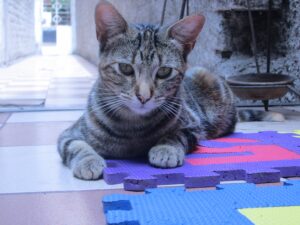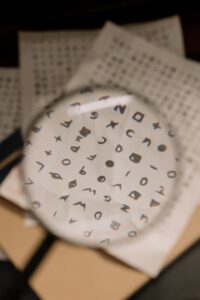When I first started teaching Phonics, everything about it scared me! I can’t remember how I learned to read so when I heard the fancy lingo linked to Phonics, I panicked. Fast-forward 20 years and now children are being taught phonics terminology from as young as 4! So here’s a list of definitions you may need when teaching your child phonics.

What is phonics?
Phonics is a method of teaching children how to read and write by teaching them the relationship between sounds (phonemes) and the letters (graphemes) that represent them in written language. In other words, phonics instruction teaches children how to decode words by sounding out the individual sounds in them and matching those sounds to the corresponding letters or letter combinations.
Phonics instruction typically starts with teaching children to recognise and differentiate individual sounds in spoken language. Once children have developed this skill, they can begin to learn the letters and letter combinations that correspond to those sounds.
Phonics is often a key component of early reading and it has been shown to be an effective method for teaching children how to read and write.
Phoneme
A phoneme is the smallest unit of sound in a language that can distinguish one word from another. It is a basic unit of sound that is used to differentiate words in a language. For example, in English, the words “bat” and “cat” are distinguished by the initial phonemes /b/ and /c/, respectively.
Grapheme
A grapheme is the smallest unit of a writing system that represents a phoneme or a sound in a language. It is the written symbol or letter used to represent a sound in a particular language. For example, the word “cat” contains three graphemes: the letter ‘c’, the letter ‘a’, and the letter ‘t’.
It’s important to note that some sounds may be represented by more than one grapheme and sometimes a single grapheme can represent multiple sounds. Additionally, some graphemes may have more than one pronunciation depending on their position within a word or the surrounding sounds.

Blending
Blending is a reading strategy in which a reader combines individual sounds or phonemes to form words. It is the process of smoothly combining individual sounds together to form a complete word.
When a reader uses blending, they look at the individual letters or graphemes in a word, and then blend them together to pronounce the word. For example, when reading the word “cat,” a reader might first say the sounds c, a and t separately, and then blend them together to say the word “cat.”
Blending is a fundamental skill in learning to read, and it is often taught in early literacy instruction.

Segmenting
Segmenting is the opposite of blending and is a writing strategy used in phonics instruction to help students spell words. It involves breaking down words into their individual sounds or phonemes and then writing the corresponding graphemes or letters for each sound.
Segmenting is an important skill in learning to write, as it helps students understand the relationship between sounds and letters. Segmenting is often taught in conjunction with blending as part of phonics instruction, as these skills work together to support early reading and writing development.

Digraph
A digraph is a combination of two letters that represent a single sound or phoneme. The letters may be adjacent or separated by another letter. Common digraphs in English include “th,” “sh,” “ch,” and “ph.”
Digraphs are different from two letters that represent two separate sounds, such as the letters “k” and “n” in the word “knee.” In a digraph, the two letters work together to create a unique sound that is different from the sounds of the individual letters.

Trigraph
A trigraph is a group of three letters that together represent a single sound or phoneme. Unlike digraphs, which are composed of two letters, trigraphs are made up of three letters.
There are several trigraphs in the English language, including “igh,” “ear” and “air.” For example, in the word “light,” the “igh” trigraph represents the long “i” sound.

Split Digraph
A split digraph (also known as a magic e or silent e) is a specific type of digraph in which an “e” at the end of a word or syllable separates the vowel and consonant, causing the vowel to become a long vowel sound.
For example, in the word “bike,” the “e” at the end of the word separates the “i” and “k” and changes the sound of the “i” from a short “i” sound to a long “i” sound.
Split digraphs are often taught in early literacy instruction as part of phonics and decoding activities, as they can be difficult for students to identify and sound out.

CVC words
A CVC word is a word that consists of a consonant sound, followed by a vowel sound, and then another consonant sound. The term “CVC” stands for “consonant-vowel-consonant.”
Examples of CVC words include “cat,” “dog,” “pig,” “hen,” and “map.”
CVC words are often used in early literacy instruction as they are easy to sound out and decode. By mastering CVC words, students can build a strong foundation for more complex word recognition and reading skills.

Tricky Words
Tricky words are words that cannot be easily decoded using phonics rules or common spelling patterns. They are often irregular or do not follow typical spelling or pronunciation patterns in English.
Examples of tricky words include “was,” “one,” “said,” and “who.” These words cannot be sounded out phonetically, and their spelling does not follow typical spelling rules.
Tricky words are often taught separately from phonics and decoding instruction, and instead, students are encouraged to memorise them through repetition and practise.

Decoding
Decoding is the process of using knowledge of letter-sound relationships, word patterns, and other cues to read and pronounce words. It involves breaking down words into individual sounds, and then blending those sounds together to form a whole word.
In the context of reading instruction, decoding is often taught as a foundational skill that helps students become more fluent readers. By mastering decoding skills, students can read unfamiliar words and text with greater ease and accuracy.
Decoding strategies can include sounding out words phonetically, recognising word patterns and syllables, using context clues to guess the meaning of a word, and relying on prior knowledge and experience to make educated guesses.
While decoding is an important component of reading, it is not the only factor that contributes to reading comprehension. Students also need to understand the meaning of the words they are reading and be able to make connections between different ideas and concepts.

Consonant Blend
A consonant blend is a group of two or more consonant sounds that are pronounced together in a word without any vowels between them. Also known as consonant clusters, they are a combination of consonant sounds that come together to form a distinct sound.
Examples of consonant blends include “bl” in “blue,” “br” in “bread,” “fl” in “flame,” “fr” in “friend,”
Consonant blends are important in phonics and reading instruction as they can help children recognise and decode words more quickly and accurately. They also play a role in spelling, as understanding how consonant blends work can help learners spell words correctly.

Grapheme-phoneme correspondences (GPCs)
Grapheme-phoneme correspondences (GPCs) refer to the relationship between written letters (graphemes) and their associated sounds (phonemes) in a language. In other words, GPCs are the rules that govern how letters and letter combinations are pronounced in a language.
For example, in English, the letter “a” can represent different sounds depending on the word it appears in. In the word “cat,” the “a” is pronounced as the short “a” sound /æ/, while in the word “cake,” it is pronounced as the long “a” sound /eɪ/. These different pronunciations of the letter “a” are examples of grapheme-phoneme correspondences.





